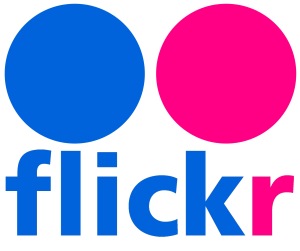Background
O’Reilly framed the concept of Web 2.0 with eight core competencies. This post is devoted to the last of these competencies – “Lightweight Models and Cost Effective Scalability.” In modern business environment companies are aimed at deploying complex web services stack to make stable programming environment for applications offered. Although Web 2.0 substituted the concept of hypertexts offering better visual design, expensive web services stacks have not yet gained popularity. One reason for that can be the focal Web 2.0 investment thesis: if you want to get investors you have to disagree with a popular trend and offer a new different product. Tim O’Reilly claims “It is interesting to see how each Web 2.0 facet involves disagreeing with consensus… It’s not just disagreeing to be disagreeable (pet food! online!), it’s disagreeing where you ca build something out of differences” (“Lightweight Programming Models” n.d.). In such context, emergence of the whole Web 2.0 concept was the result of disagreement to Web 1.0. The core principle in Web 1.0 was to grow shortly. However, Web 2.0 created a new business slogan small is the new big. Despite the fact that large companies still try to invest huge sums into complex web services stacks, most of Web 2.0- based business are using “small is the new big” principle at its fullest.
Lightweight Models and Cost-Effective Scalability Defined
Such principle presupposes that business do not depend heavily on resources, IT staff and large investments to start or maintain their activities efficiently. Rather companies are capable of delivering cheaper products more quickly without losing their revenue. As a result, companies achieve “agile development model for efficiency” (Mathiesen, Watson, Bandara, Rosemann 2011) and the strategy of achieving more with less, which is defined as lightweight models and cost-effective scalability. Many modern companies provide their web services in two forms: lightweight models (for instance, REST) and web services stack (for instance, SOAP). If the latter can be used for B2B operations and in very rare cases, the former is used in 90% of all other instances. The principle of doing “more with less” was boosted with the development of social platforms as their outsourced infrastructure increases agility and reduces the possibility of expensive and complicated development tools. There are significant benefits that such strategy brings for business: 1) better understanding of and faster adaptation to market needs; 2) increased financial circulation with reduced expenditures and time; 3) minimized risk of product failure through constant collection of feedbacks from customers on performance and 4) flexibility in choosing new trend or product line to influence target market segment.

Flickr
Because social networks platforms are usually started without any big financial support, they can serve as an ideal example of how lightweight models and cost effective scalability work in practice. Flickr is an image and video hosting website that was developed in 2004. Nine years after, it was reported that the total number of registered members reached 87 million with 3.5 million images being uploaded on a daily basis (Jeffries 2013). From the very beginning Flickr positioned itself as different from the similar services: while most of providers put accent on keeping such data private, Flickr leaves the possibility of make user’s data public. Users have the possibility to upload content and decide whether it should be public or private (FAQ. Public/Private n.d.). Users can access and view photos without member registrations, but one has to make an account to upload multimedia content. Basically, Flickr does not have any pictures or videos to share. Rather it provides storage space and user-friendly environment for photos uploaded by users.
References:
“FAQ. Public/Private.” Flickr. N.p., n.d. Web 24 March 2015. https://www.flickr.com/help/privacy/
“Lightweight Programming Models.” O’Reilly. N.p., n.d. Web 24 March 2015. http://www.oreilly.com/pub/a/web2/archive/what-is-web-20.html?page=5
Jeffries, Adrianne. “The man behind Flickr on making the service ‘awesome again’. The Verge. The Verge Magazine, 20 March, 2013. Web 24 March 2015 http://www.theverge.com/2013/3/20/4121574/flickr-chief-markus-spiering-talks-photos-and-marissa-mayer
Mathiesen, Paul, Watson, Jason A., Bandara, Wasana, & Rosemann, Michael. Applying social technology to Business Process Lifecycle Management. Queensland University of Technology, 2011. Web 24 March 2015 http://eprints.qut.edu.au/43384/1/BPM2011_Mathiesen1807.pdf
Great post Raeed!
Flickr has a really simple structure in comparison with other sites. Although I didn’t use Flickr in the past, I read that Flickr do change a lot to match the market needs in very short period after some important announcements from the IT sector. This really shows that Flickr is a lightweight model website. However I am not so sure about how they actually generate their revenue.
LikeLike
Hi,
This is Hussian. Your post looks amazing. Flickr is a very good example in accordance to lightweight models and cost effective scalability. In this era very important thing is networks. Flickr increases its market based on the network they have created and maintained. This also helps them in promoting their product.
Nice work !
Regards,
Hussian
LikeLike